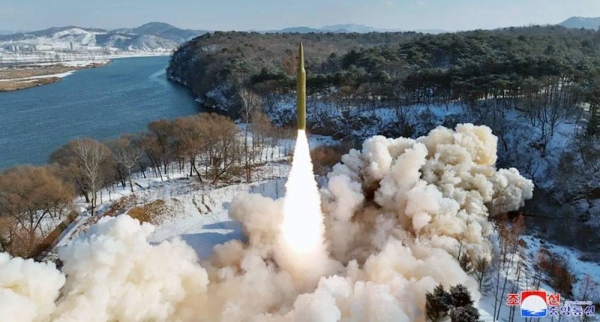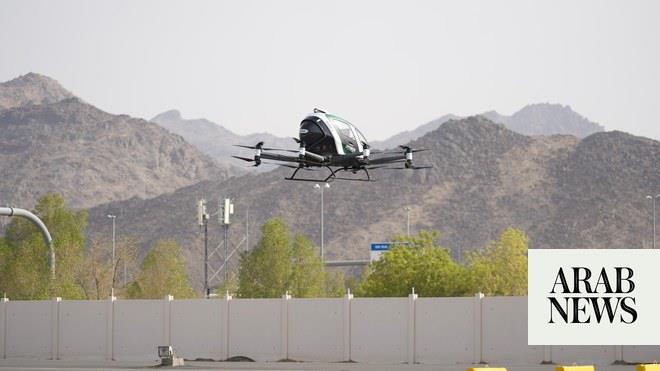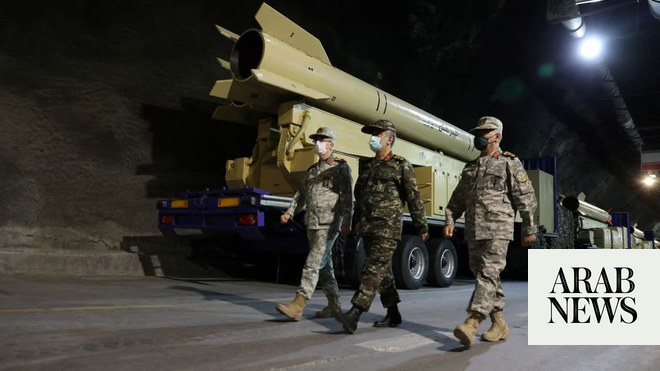
The new surface-to-surface missile, named Hoveizeh, was from the Soumar family of cruise missiles, which were unveiled in 2015
Analyst says Iran"s new cruise missile as “a hodgepodge of parts and technology ranging from Ukraine to China”
JEDDAH: Iran claimed on Saturday it had “successfully tested” a new cruise missile with a range of over 1,350 kilometers.
An undated 37-second video on the country’s Defense Ministry website appeared to show the launch from different angles with the projectile fired from a mobile launcher and landing in the desert.
“The test of the Hoveizeh cruise missile was carried out successfully at a range of 1,200 kilometers and accurately hit the set target,” Defense Minister Amir Hatami said. “It can be ready in the shortest possible time and flies at a very low altitude.”
Hatami described the surface-to-surface Hoveizeh as the “long arm of the Islamic Republic of Iran.” It is part of the Soumar group of cruise missiles, first unveiled in 2015 with a range of 700 kilometers, he said.
Amirali Hajizadeh, head of the Islamic Revolutionary Guard Corps’ aerospace division, said Iran had overcome problems in producing jet engines for cruise missiles and could now manufacture a full range of the weapons.
The launch was part of an arms exhibition in Tehran called “40 years of defensive achievements.” Iran began 10 days of celebrations on Friday to mark the 40th anniversary of its revolution.
Western sanctions have starved Iran’s air force of spare parts and replacement aircraft, limiting its operational capacity. Instead Tehran has expanded its missile program, in defiance of opposition from the US and concern by European countries.
Washington warned Tehran last month against undertaking three planned rocket launches that it said would violate a UN Security Council resolution because they use ballistic missile technology.
UN Security Council Resolution 2231 calls on Iran “not to undertake any activity related to ballistic missiles designed to be capable of delivering nuclear weapons.” The US has repeatedly accused Iran of violating the resolution.
Iran’s space program has also been criticized. The US says a failed satellite launch in mid-January was cover for an attempt at intercontinental ballistic missile capability.
Nevertheless, Western experts say Iran often exaggerates its weapons capabilities.
Dr. Theodore Karasik, a senior adviser to Gulf State Analytics in Washington DC, described the new cruise missile as “a hodgepodge of parts and technology ranging from Ukraine to China.”
The test “demonstrates Iran’s ability to be able to fire off missiles, but there remain serious questions about technical capabilities and targeting success,” he said.
“As a psychological tool, the missile test succeeds in attracting attention to Tehran’s continuing threatening behavior with expensive missile tests. From Tehran’s point of view, the missile and others in the series are meant to cajole the West into bringing Iran into a larger arms control negotiation by using missile theatrics that just won’t fly.”
Iran says its missile tests are not in violation of the resolution and denies its missiles are capable of carrying nuclear warheads. It says its missiles are defensive and used for deterrence and has rejected talks over its missile program.
US President Donald Trump quit the deal last year and reimposed sanctions on Iran that had been lifted under the pact in return for Tehran curbing its nuclear program.
Washington says although Iran has met the terms, the accord was too generous, failing to rein in Iran’s ballistic missile program or curb what the United States says is interference in regional affairs.











